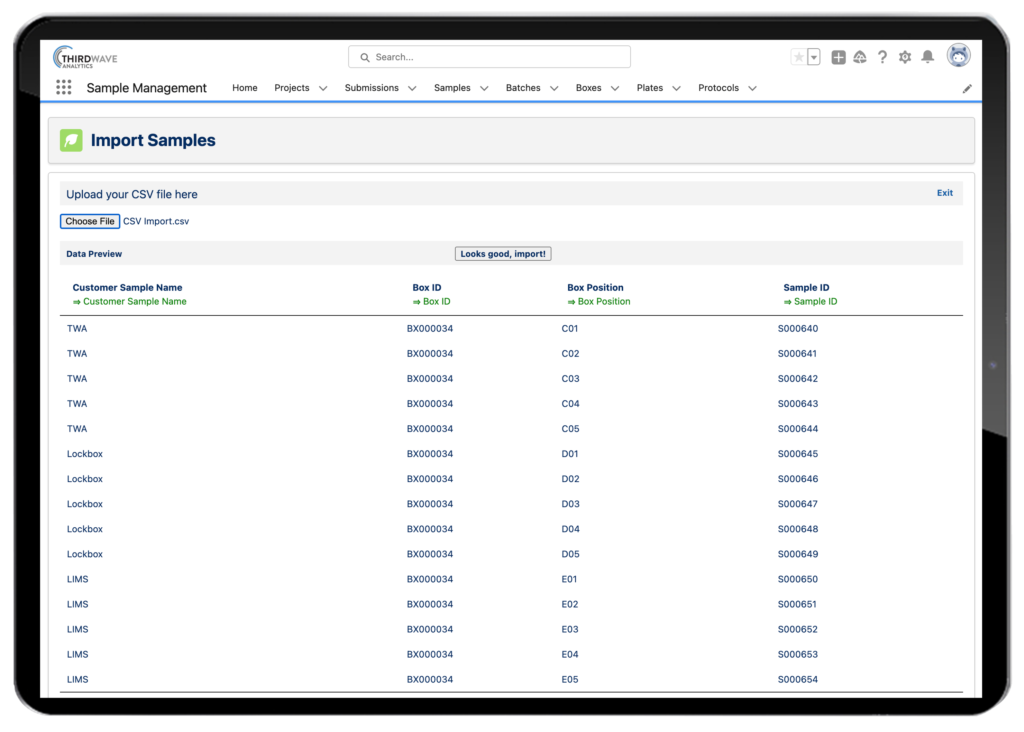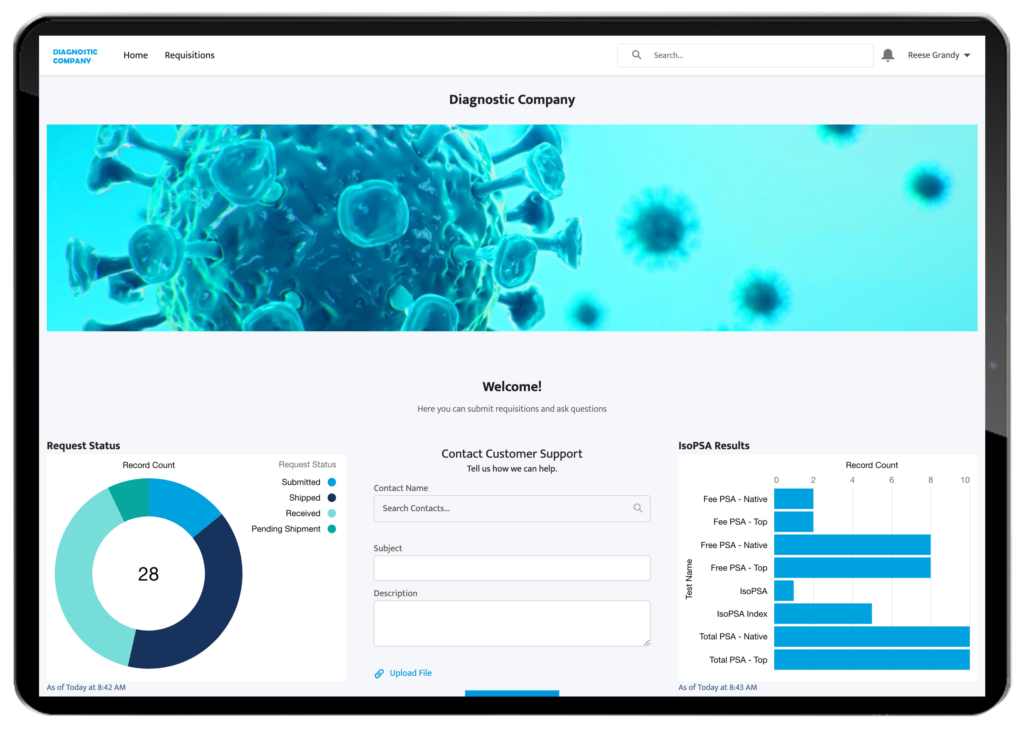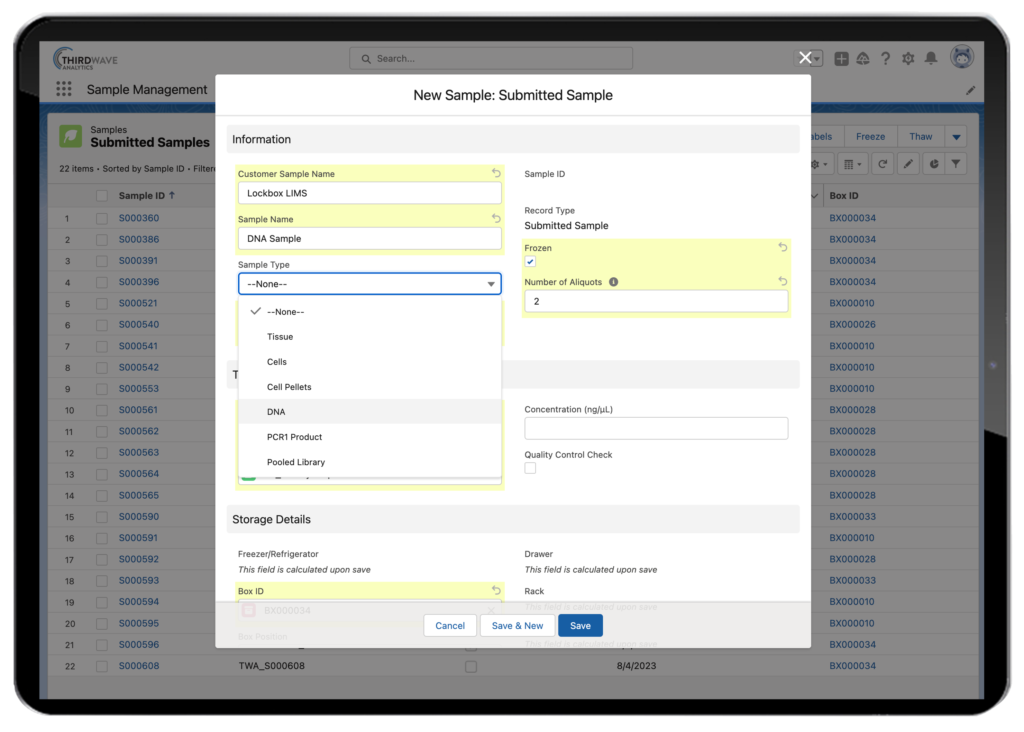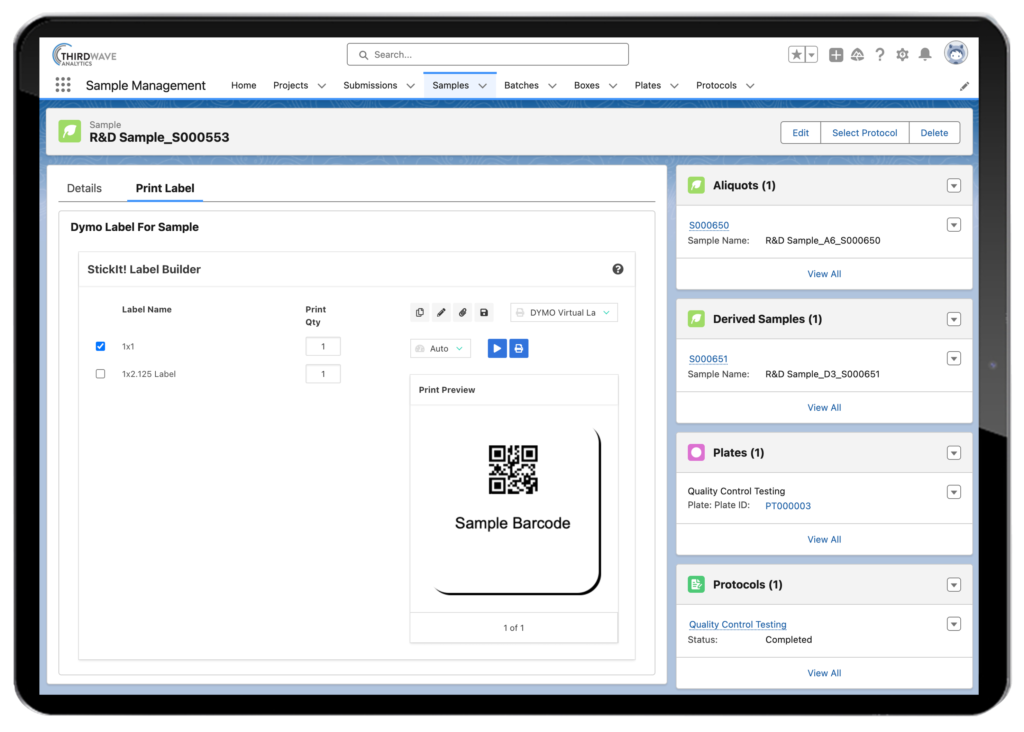10 Sample Accessioning Improvements Delivered by Lockbox LIMS
Accessioning samples is one of the most time-consuming and error-prone processes in a clinical lab or research lab. Because the process is often manual, it becomes one of the biggest bottlenecks in specimen collection and laboratory testing.
A modern, well-designed laboratory information management system (LIMS) – also called a laboratory information system – can significantly improve accessioning and lab testing. Sample accessioning does not need to be a pain point at your lab. When your LIMS is configured to work well with your lab process, sample accessioning, sample management, and quality assurance can be easy, quick, and error-free.
A well-designed LIMS system has a comprehensive array of capabilities for laboratories. How does that system help sample accessioning? Here are ten ways Lockbox LIMS can help improve the speed of your sample accessioning and reduce errors in the process.
1. Upload a file into Lockbox LIMS to import multiple samples simultaneously.
Uploading a file containing multiple samples is one of the best ways to improve the speed of sample accessioning. Depending on the amount of information you want to upload for each sample, you can generally upload hundreds, even thousands, of samples in a single CSV file. When dealing with that many samples, editing a single CSV file and then uploading it into the Lockbox LIMS system is much faster.
The trick is getting all your sample data into a single file with the correct format. As mentioned with Lockbox LIMS, you can easily upload a standard, easy-to-use CSV file. If you receive a group of samples from a single client or collaborator, you can provide them with a file template for them to upload. Your customer already has all the information you need; in that case, exporting a file for you is simple.
A huge benefit of uploading a CSV file is that a significant amount of error checking occurs. You can ensure that certain data elements are required so that a sample is not uploaded without that essential data. You can also assign error checking for a type of data; for instance, if you are expecting a date for a Date of Birth field related to patient information, Lockbox LIMS prevents an upload of errant text that doesn’t fit that requirement.
It only takes mere hours to enable custom CSV import functionality by configuring it in Lockbox. You can quickly configure your system with this powerful tool.
Enabling a CSV file upload is one of the best ways to improve the speed of sample accessioning and the integrity of the data entered.

2. Streamline data entry to speed up manual sample access in Lockbox LIMS.
As part of your lab’s sample tracking process, you most likely manually enter data for each sample that comes through the door. Lockbox LIMS has many ways to speed up the laborious sample entry process in these cases.
First, a special sample entry form can be created that only displays data fields needed for sample entry. This removes any other areas that clutter up the page. Second, Lockbox LIMS can automatically enter default values in as many fields as possible, saving you from having to enter a value. For example, a Date/Time Received field can be automatically listed as ‘right now.’ Or, the name of the individual who accessioned the sample will populate automatically as the person currently logged in. Using these default values can significantly speed up the sample accessioning process.
Finally, Lockbox LIMS can require specific fields or use logic to check the validity of any data (e.g. you could not enter a sample collection date that falls after a sample receipt date). This reduces data-entry errors and prevents tedious follow-up investigations into erroneous sample data and test results.
3. Allow customers to log into the Lockbox LIMS system to enter sample data.
Lockbox has an easy-to-configure customer portal that allows customers to log into your system and enter relevant sample data. There is no better way to streamline your process than outsourcing portions to your customers that make sense for them, too.
The Lockbox LIMS customer portal gives the customer only limited access. They can only view the information you want them to see. Here’s how it works: Perhaps you want the customer to create a requisition to request testing of a patient specimen sample. They could enter the PHI, sample collection information (including time of collection), and the sample collection kit’s barcode. When a sample arrives, you scan in the sample barcode—and all of that sample’s information is already in the system. From there, you only have to document receipt of the sample, and then you can begin testing.

4. Enable Lockbox LIMS to interface with other systems to send sample orders to Lockbox LIMS automatically.
Lockbox LIMS can integrate with just about any system that uses a standard API (application programming interface). If a sample’s data is already entered into another system (such as an EHR, for sample ordering), you can seamlessly integrate the system with Lockbox LIMS. When a healthcare provider enters data into an EHR, the information is also sent to Lockbox, with data entered automatically.
One consideration is that these file integrations can take some time to run. Many systems do not inherently play well with other systems. To use our EHR example, many EHR systems use HL7 formatting, which is problematic for other systems. Getting the required reformatting for unique formats like HL7 files can take time and effort. However, once the integration is complete, this is a fantastic way to expedite data entry into Lockbox.
5. Remain HIPAA-compliant with Lockbox LIMS and enter PHI into the system.
Lockbox LIMS uses the Force.com platform, the backbone of the Salesforce system. This system executes millions of daily transactions containing confidential information such as credit card data, personal demographic data, and Protected Health Information (PHI). It is fully compliant with all appropriate regulations for these types of data.
Here are the four significant forms of protection for Lockbox LIMS to store PHI data.
- Access to Lockbox LIMS has a high level of security for anyone logging in. For example, all users can require two-factor authentication (2FA). Or, you can use high-complexity passwords that require resets at regular intervals.
- Access to data fields containing PHI can be restricted to appropriate system users only. After you determine which users do not need to see PHI, you can ensure PHI data is invisible to those users. You can also specify which users have read-only access to PHI and which few have edit access.
- You can also designate PHI data fields to have at-rest encryption. This ensures an extremely high level of security of the raw data in the rare event that a malicious entity tries to break into your system to steal data. Any PHI data that was compromised would still be encrypted and unreadable.
- All pertinent PHI data can have its history tracked. This gives you an easy-to-follow history log that displays who changed the data, when the change occurred, and the data field’s new/old values. With this functionality, you can fully reconstruct any PHI history. If someone introduces an error to your data (accidentally or maliciously), you can always reconstruct what happened and restore the accurate data.
6. Configure Lockbox LIMS to require a review of a sample record before testing.
Reviewing and releasing a sample record before testing is standard practice in many clinical testing labs. This ensures all data are accurate and all required data is present (e.g. ensure the sample is the appropriate tissue type).
With Lockbox LIMS, it is straightforward to establish a review process before sample testing. The simplest method is to update a ‘Sample Status’ after each action. That places a sample in each relevant queue throughout the process. More specifically, a sample could have a ‘Submitted’ status after it is entered into the system, which then routes it for review. After the sample review, the ‘Sample Status’ is updated to either ‘Released’ to enable testing or ‘On Hold’ if the sample requires further assessment before testing.
7. Save files to a sample record, such as a copy of the order form that came with the sample.
With Lockbox LIMS, saving a scanned PDF or image to a specific sample record is easy. You can save as many files to the sample record as you like, with no limit to the types of file formats.
8. Differentiate between different sample types or have different cohorts of samples.
Labs commonly wish to differentiate research and clinical samples, which is easy to do with Lockbox LIMS. There are multiple ways to determine types of samples, from having a simple ‘Sample Type’ picklist on a sample record (e.g. with values of ‘Research,’ ‘Clinical,’ etc.) to having different sample record pages for each sample type. For example, maybe your ‘Research’ and ‘Clinical’ samples have other data you want to collect, and you would like a different look on each records page.
No matter how you like to differentiate samples, Lockbox LIMS provides a variety of solutions to choose from.

9. Have Lockbox LIMS generate a barcode or unique identifier for each sample.
It is always best practice for each sample to have some unique identifier in your system. This can be the sample barcode you print and apply to the sample tube or an ID in your system.
Lockbox LIMS is exceptionally flexible in providing a variety of barcodes and unique identifiers to meet your specific needs. In a. straightforward situation, Lockbox LIMS can generate a unique number (e.g. S000001, S000002, S000003). With more complexity, Lockbox can create an identifier with human-readable elements and embedded logic (e.g. Clinical-Saliva-00001, Clinical-Blood-00001, Research-Saliva-00003). If you provide the logic for the barcode or unique identifier, Lockbox LIMS can almost always automatically generate the value for you.

10. Print a sample barcode label to place on the sample tube during sample accessioning.
With Lockbox LIMS, you can easily print labels of varying sizes and shapes by embedding a widget that generates a barcode label onto a page. Then, you can print the label with the click of a button.
A printed label can include all types of data:
- 1D barcode
- 2D barcode (aka QR code)
- Human-readable information
- A combination of any of the above
Third Wave Analytics works with your lab to select the correct label for your needs. We determine the best way to fit all necessary data onto the label. For example, your lab may need a label that can withstand -80 °C temperatures or is alcohol-resistant.
Lockbox LIMS works efficiently with Zebra and Dymo label printers. These printers can print on a wide variety of labels. Lockbox LIMS can accommodate other types of printers, such as Brady. However, these other printers may require effort to create a seamless connection between the printers and Lockbox LIMS. With that in mind, we highly recommend Zebra and Dymo printers for this feature unless you have an essential reason to use another type of printer.
Lockbox LIMS can improve the speed and accuracy of sample accessioning.
Accessioning samples is one of the most tedious, time-consuming, error-prone lab processes. Lockbox LIMS is a highly versatile system that can be configured to meet the specific needs of your sample accessioning workflow. With our comprehensive variety of tools, we can help alleviate nearly any pain point you experience in your accessioning process.
We invite you to see how the Lockbox LIMS system can simplify your lab’s sample and inventory management. Request a free trial of Lockbox LIMS today, or register for a webinar.